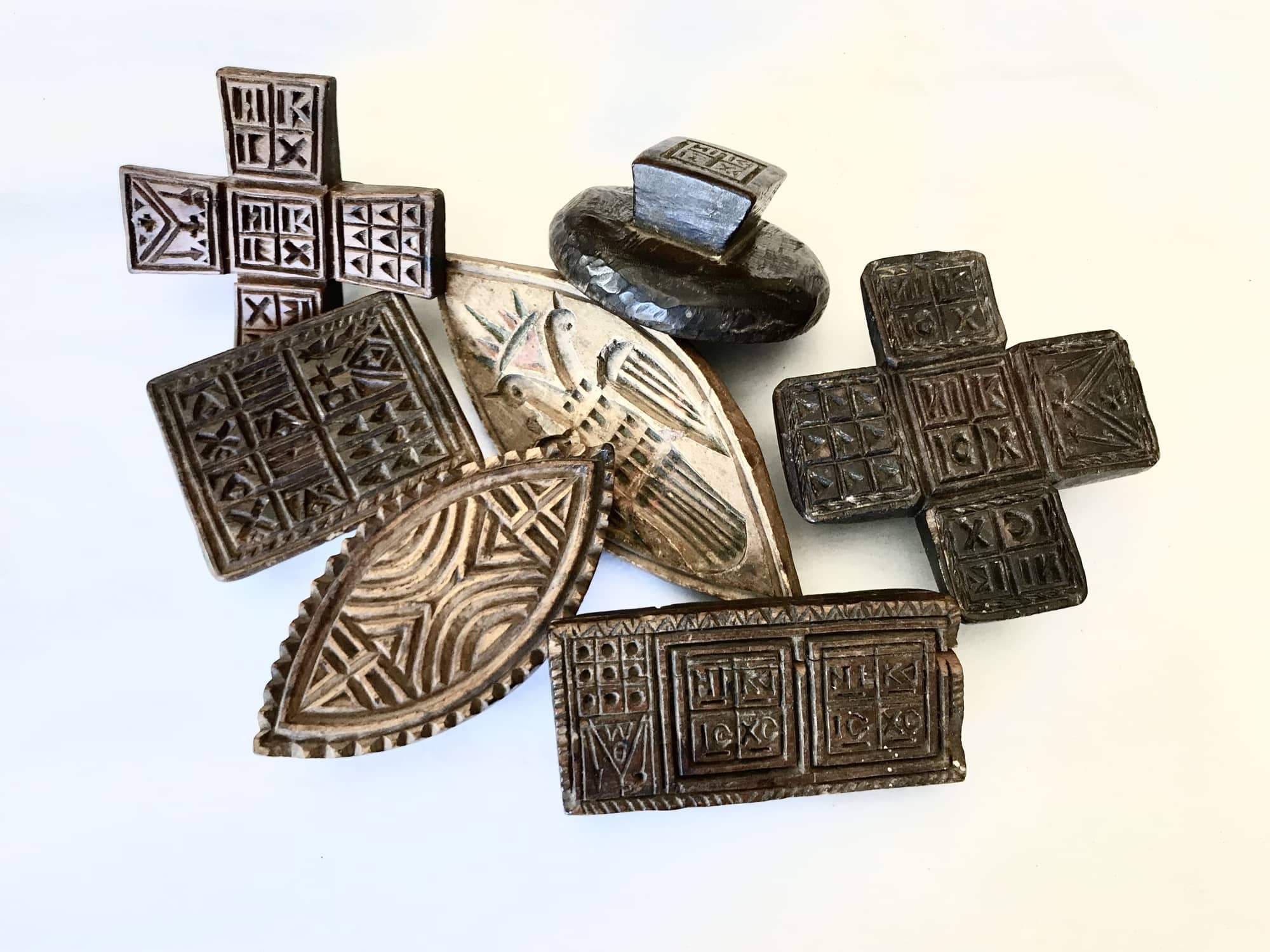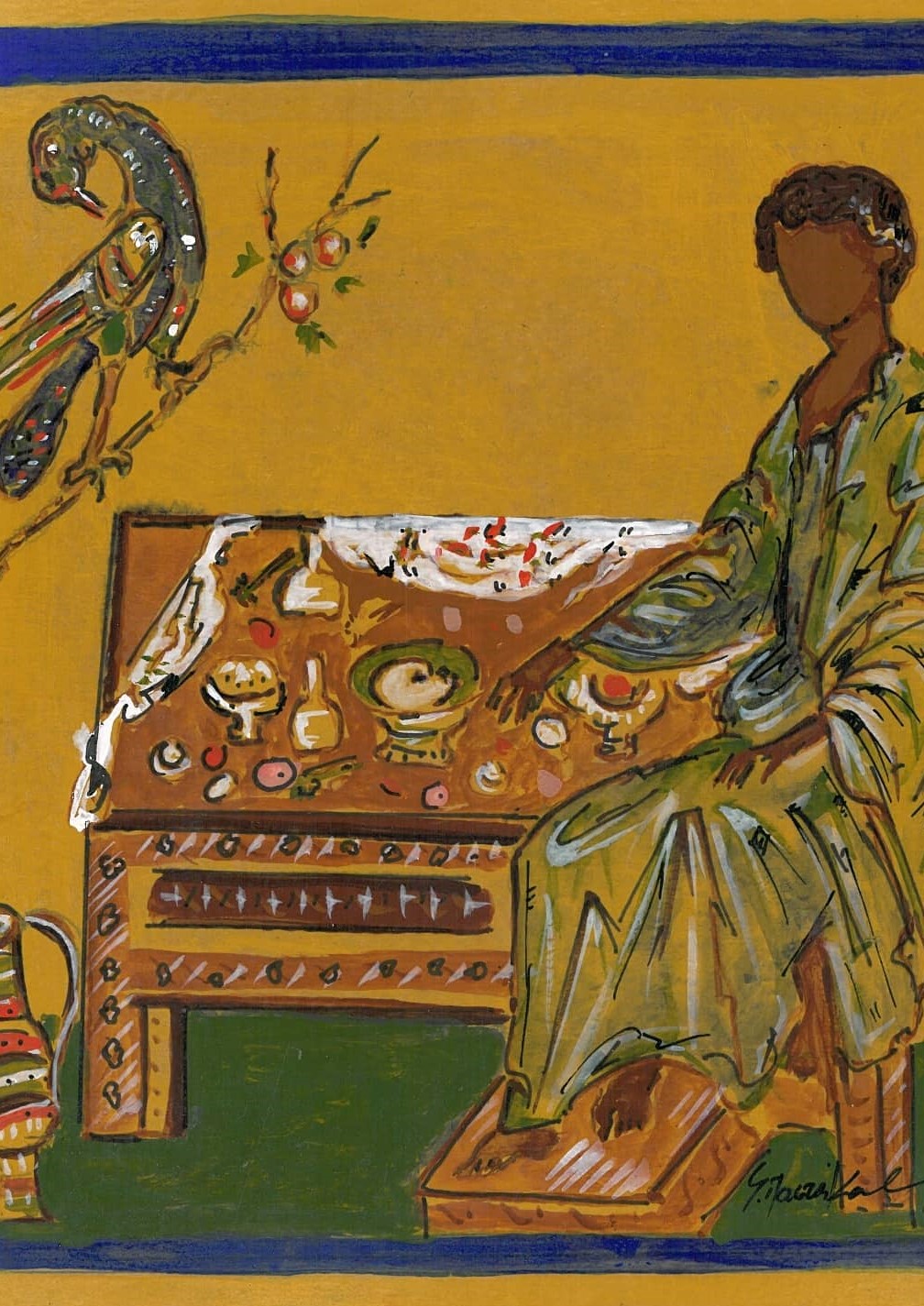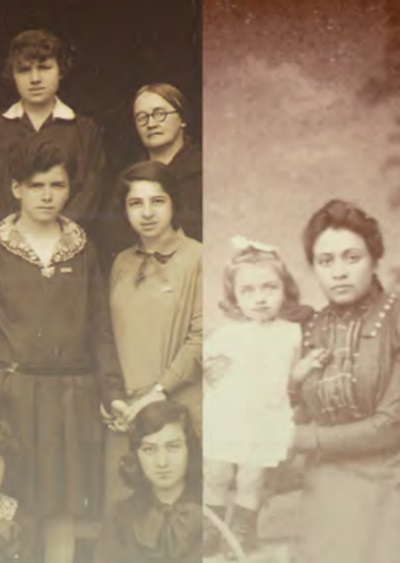
The continuity of flavours throughout history
The Byzantine era is a thrilling period of history. Wars, politics, religious brewing and conflicts, art and architecture have been studied extensively (and still are), nevertheless, the daily habits of the people of the empire remain obscure. And while information on Ancient Greek cuisine is abundant, having as the main source a complete culinary guidebook, Deipnosophistae by Athenaeus, things are different for the Byzantium for which sources are fragmented: historical texts, medicinal manuals, poems, letters, ecclesiastical guidelines and monastic rules provide us with the pieces which help researchers complete the puzzle of Byzantine cuisine.
As in every era, in the Byzantine also, the dining table gave a clear indication of financial and social status. Beyond doubt, the delicacies on the family table depended on the financial means of each household. Another factor that defined nutritional choices was geographical location. Cities offered a plethora of choices since ships and merchants arrived, carrying products and recipes from all over the world. Especially in Constantinople, a genuinely multi-ethic and multicultural city, flavours were blended: caviar from the Black Sea, antelopes from Asia Minor, spices from Mosul, dears from the West. Peddlers sold all kinds of foodstuffs in the streets and churches’ courtyards. Quite the opposite, in the smaller towns and more remote regions of the empire, locals were content with the produce of their own land. They took care though, to preserve as much as possible, so as to have it available all year round.
The staple food of the Byzantines was bread (artos). Its quality depended on the grain, the preparation of the dough, the baking process and the shape of the oven. ‘White bread’ was considered top quality, while the ‘in between’ kind, wholegrain, was also thought to be good and more easily digested. The one called ‘olyrite’ was of a lower quality since it was made with inferior wheat. Bread substitutes were the boukelaton and barley rusks, the basic food for the army and travellers since they were light to carry and withstood hardships.
Anything accompanying bread was called prosfagion. The word usually meant cheese, since even until today it remains bread’s favourite match. Vlachiko was considered the finest, along with a variety from Crete, while the most popular were anthotiro (kind of cottage cheese) and mizithra.
As mentioned, fish were also very popular. As a matter of fact, Constantinople was the ideal location for fishing and the markets of the city provided a wide variety. Oily fish as tuna and cephalos (mullet) were included in the diet of the Byzantines, also red mullet, sea bass, sea bream, almost all the fish we know today, but also some unknown as narkes and trigones. Moreover, shell fish and cephalopods (octopus, squid etc.) were much sought after since they were allowed to consume them during fasting. Caviar arrived from the Black Sea, while after the 12th cent. AD salted herring was imported from modern-day Britain.
The favourite fish by-product was garos, a sauce made from their entrails, blood and bronchi. This rather unpleasant for today’s standards condiment was drizzled even over meat, and was considered so essential in every meal that a special container was invented for it. Most likely it had a very strong flavour, was used for seasoning and had its roots in the Roman era.
Another essential food was eggs, omnipresent in diet of the Middle Ages, even on the tables of the poorest households. Eggs of choice were those laid by hens and pheasants, but also by partridges, geese and ducks; they were boiled, fried or even eaten raw.
Chickens, blackbirds, pheasants, ducks, thrushes, peacocks and cranes were also cooked in Byzantine cuisine. In the rich feasts of gourmants, dishes with chickens stuffed with fish were served as well as the opposite, i.e. big fish stuffed with small birds.
A stark contrast to these extravagant dishes was the aghiozoumi, a monastic soup made with onions boiled in water and a small quantity of olive oil. In general, the diet of monks and the clergy had to be more frugal, although frequent directives of the church reveal this was not always the case.
The consumption of pulses, vegetables and greens was widespread, since it was the essential diet of the less privileged social strata.
The Byzantines loved desserts. The wealthy had the means to employee a specialized confectioner. Honey was the basic ingredient and the best came from Greece: Hymettos Mountain, the Cyclades Islands and the island of Thasos.
It goes without saying that an excellent wine could not be left out of an excellent meal. The wine of Thasos was considered the best and only the rich could afford it. Quality wine was produced in all the regions of the empire. Those from Crete, Cyprus, Monemvasia and Asia Minor were highly appreciated. Lower quality wines were called fuska, deriving from the Latin posca, the cheap beverage drunk by Roman soldiers. Depending on their colour, wines were categorized into white, blonde, red and black; there was also a kind of resin wine, popular among the Byzantines, but rather strange for the more biased and hostile Western ambassadors, as reported by Liutprand of Cremona who visited Constantinople in the 10th cent. AD. Indicative of luxury was the so-called ‘warm wine’, i.e. wine mixed with hot water. They even had special methods to avoid getting drunk: they ate kramvi (wild cabbage) or bitter almonds early on.
The consumption of wine was a daily habit of the more privileged inhabitants of the empire. Extravagant dinner parties featured a sommelier, the oinochoos, while cooks and servants waited upon the guests. For entertainment they had musicians, magicians, acrobats and others. When clergymen had to attend a symposium, a wedding dinner for example, they sanctified the meal and left when the music started. In the luxurious symposiums the utensils used were made either of gold or silver, while the tables were silver-plated or decorated with ivory. On the other end of the spectrum though, the less privileged had to go by with clay or wooden kitchenware; the village folk especially, used round tables that were more practical since they all ate from the same bowl placed in its center.
Good table manners were a must. Savoir vivre in the Byzantium imposed the washing of hands before and after each meal since hands were used to consume solid foods. The fork was known but not used by the majority. Moreover, it was considered very rude to put food in your mouth with abrupt gestures, to take your shoes off, to get beards dirty, to speak while eating and obstruct the servers by reaching out for them while they carry the trays. Until the late 10th cent., the ancient habit of eating on a daybed was widespread, hence another misconduct, to be careless and soil the mattress.
Although in every day meals the men and the women of the family dined together, this was not allowed in official dinners and mostly it was prohibited for fathers to sit at the same table with their daughters.
The scientific study of ethnic cuisines illuminates elements of everyday life, of the local economy and of agricultural produce, trade, social stratification. It opens a ‘window’ into time through which we can take a glimpse of the actual people who lived so many centuries ago, even if it’s just a fleeting one. Besides, all of them, either emperor or patriarch, general or soldier, politician or philosopher, poet or scientist, monk or common folk, took care to secure, as in the Lord’s Prayer, their ‘daily bread’.








Leave A Comment